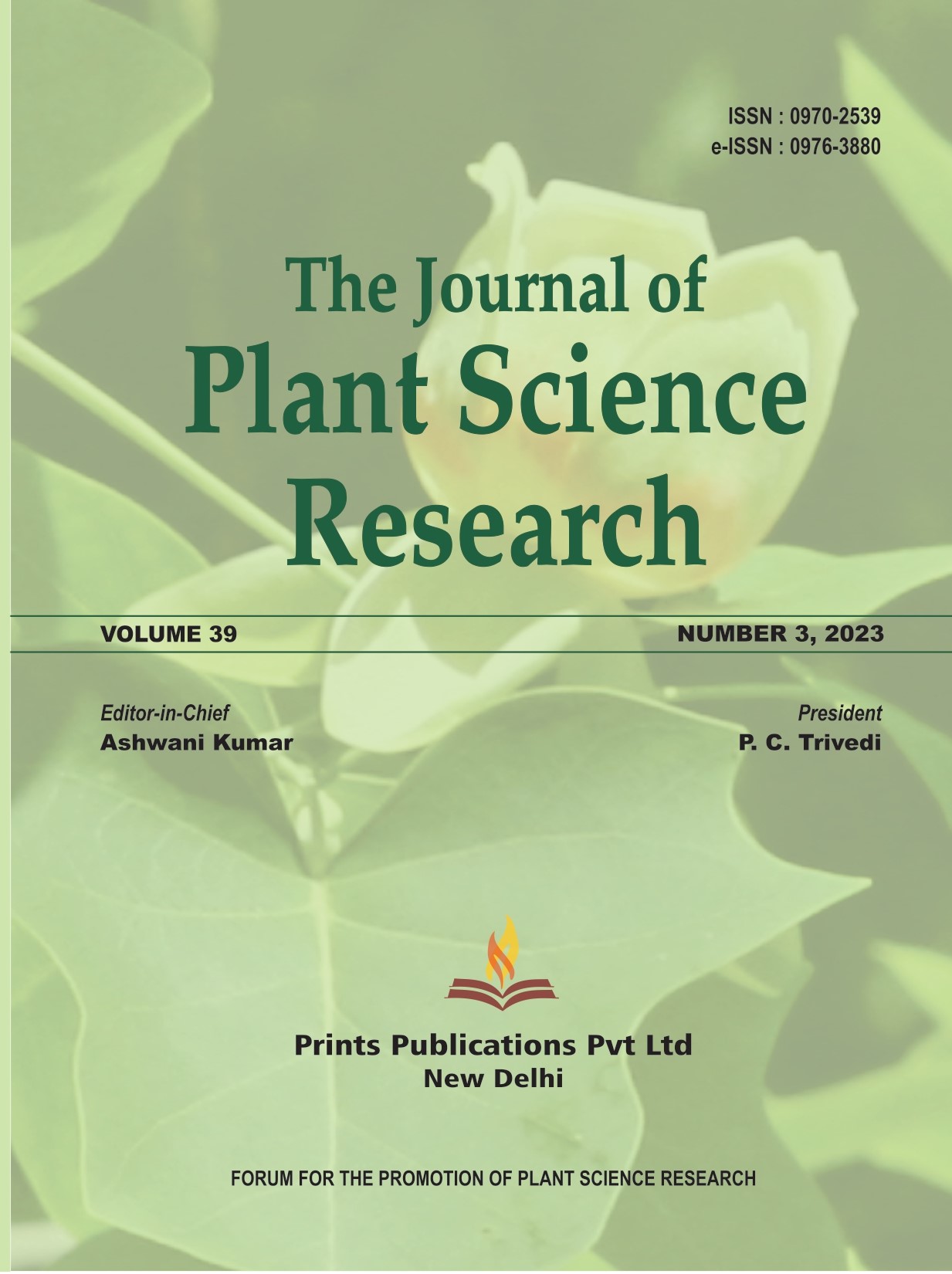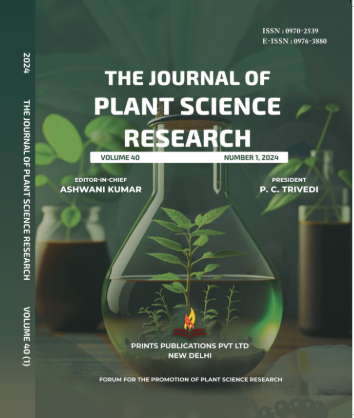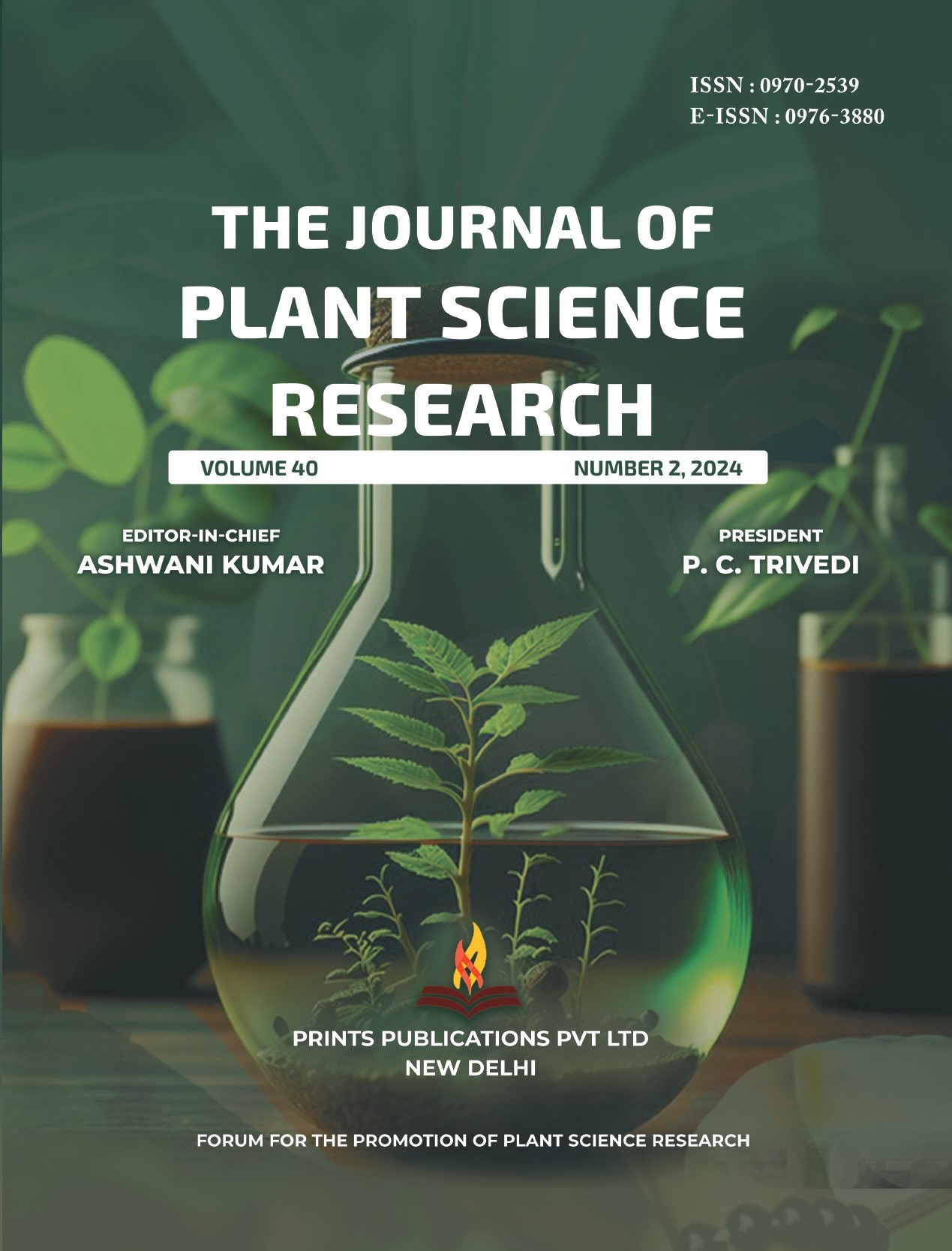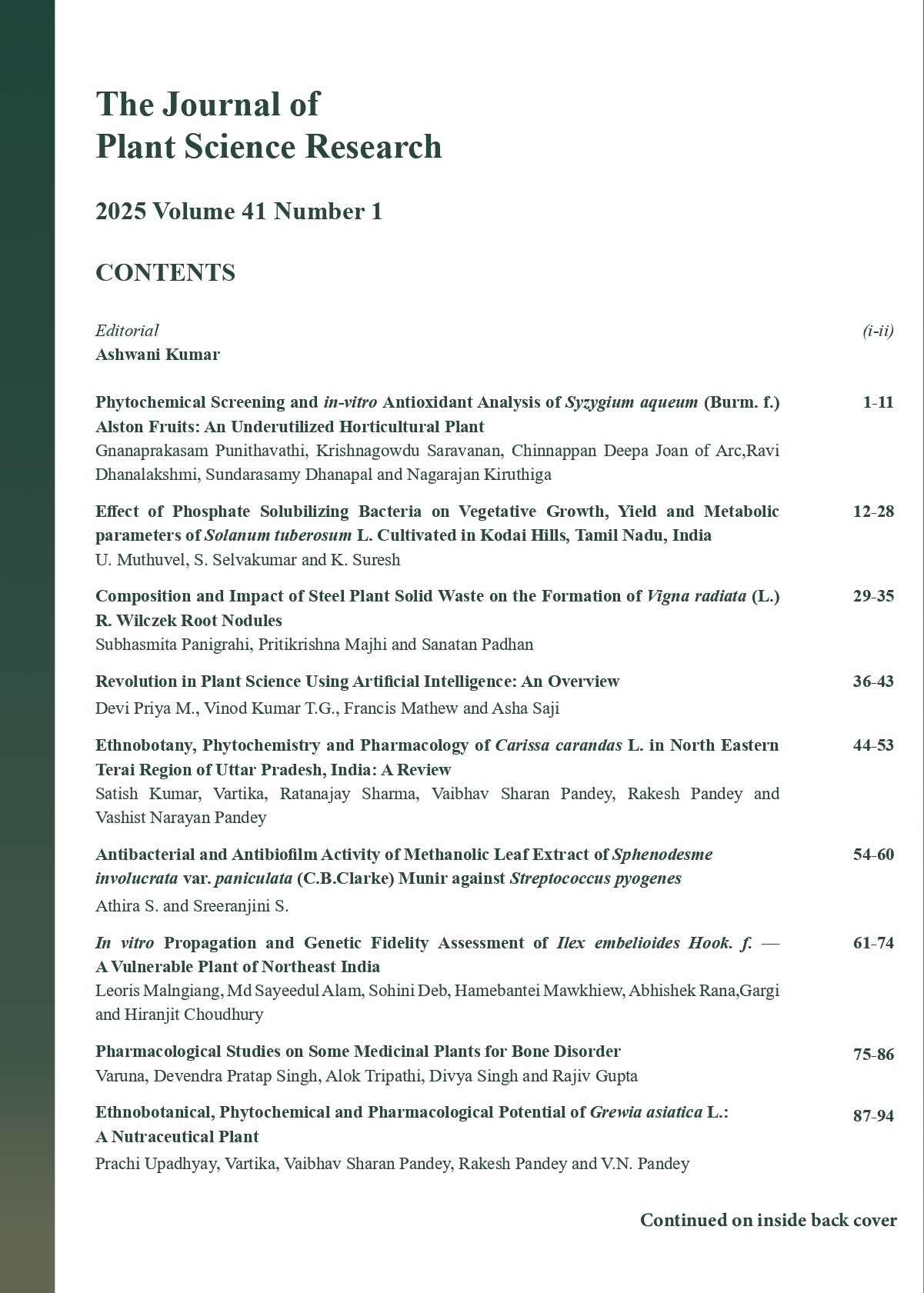The Journal of Plant Science Research - A UGC Care-Listed Journal
Published in Association with Forum For the Promotion of Plant Science Research
Current Volume: 41 (2025 )
ISSN: 0970-2539
e-ISSN: 0976-3880
Periodicity: Tri-annual
Month(s) of Publication: April, August & December
Subject: Botany
DOI: 10.32381/JPSR
Online Access is Free for Life Member
Antioxidant and Acetylcholinesterase Inhibitory Activity of Basella alba Leaves
By : Vimal B. Jayswal, V.H. Patel, Neeta R. Dave
Page No: 43-48
Factors such as oxidative stress and reduced acetylcholine level have been implicated in Alzheimer’s disease. Green leafy vegetables exhibit neuroprotective activities by various mechanism, one of them being inhibition of acetylcholineesterase (AChE). Inhibition of AChE activity has been accepted as an effective treatment for neurodegenerative disease. AChE inhibitory activity prevents it from breaking down acetylcholine in the brain and improves acetylcholine concentration which leads to increased communication between the nerve cells. Some medicinal plants like Basella alba leaves (BAL) have been found to contain numerous phytochemicals with potent antioxidant effects. The majority of these component phytochemicals scavenge free radicals thereby neutralizing their injurious potentials on body tissues. BAL is an edible perennial vine found in tropical Asia and Africa, known as vegetables containing mucilage. The objective of this research is to estimate antioxidant capacity and AChE inhibitory activity of BAL. The total phenolic compounds, antioxidant capacity (FRAP, DPPH, ABTS, RPA) and AChE inhibitory activity of BAL were studied which results into total phenolic and flavonoid content of dried BAL was 664.49 mg GAE/ 100 gm and 950.52 mg RE/ 100 gm whereas total antioxidant capacity using FRAP, RPA, DPPH and ABTS was found to be 695.58, 429.17, 204.50 and 27.08 mg TE/ 100 gm, respectively. IC50 of fresh BAL for AChE inhibitory activity was 20.02 mg while that of positive control (tacrine) was found to be 0.008 mg. BAL have good antioxidant capacity and AChE inhibitory activity.
Authors :
Vimal B. Jayswal, V. H. Patel and Neeta R. Dave : P. G. Department of Home Science, Vallabh Vidyanagar, Anand, Gujarat, India
DOI: https://doi.org/10.32381/JPSR.2023.39.03.5






